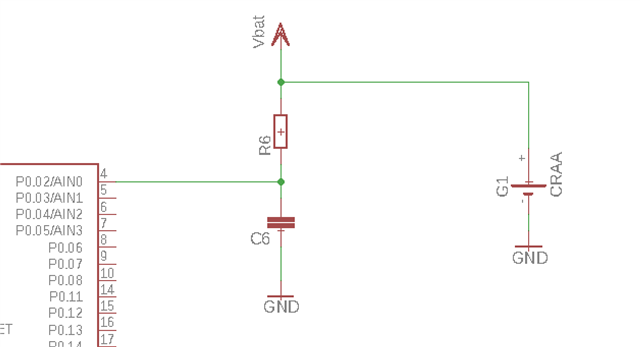Hi,
I'm using a NRF52832. I'm looking to measure the battery voltage. I'm using 2XAAA cells in serie (voltage range between 2V and 3V).
Below is the configuration to measure the voltage (To simplify the example, I have voluntarily removed protections on the battery connection).
Regarding the internal characteristics of the ADC on NRF52, what is the best value for R6 and C6 to avoid any issue with acquisition time / impedance ...? Could you confirm that the leakage would be very low (input impedance >1M Ohms on the ADC input)?

EDIT : In my real use case, the NRF is not directly powered by the batteries but by a boost circuit (3V).
Thank you


